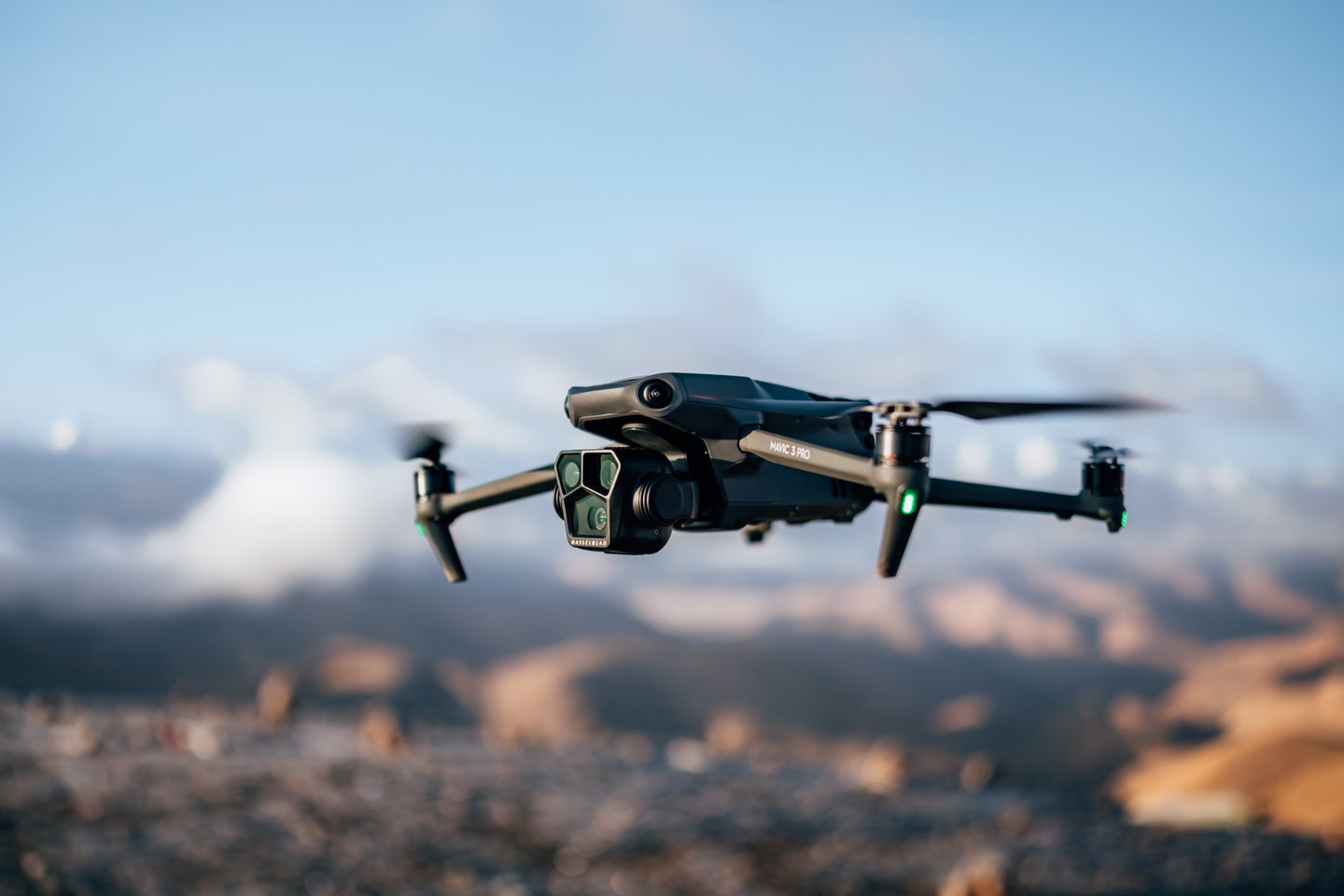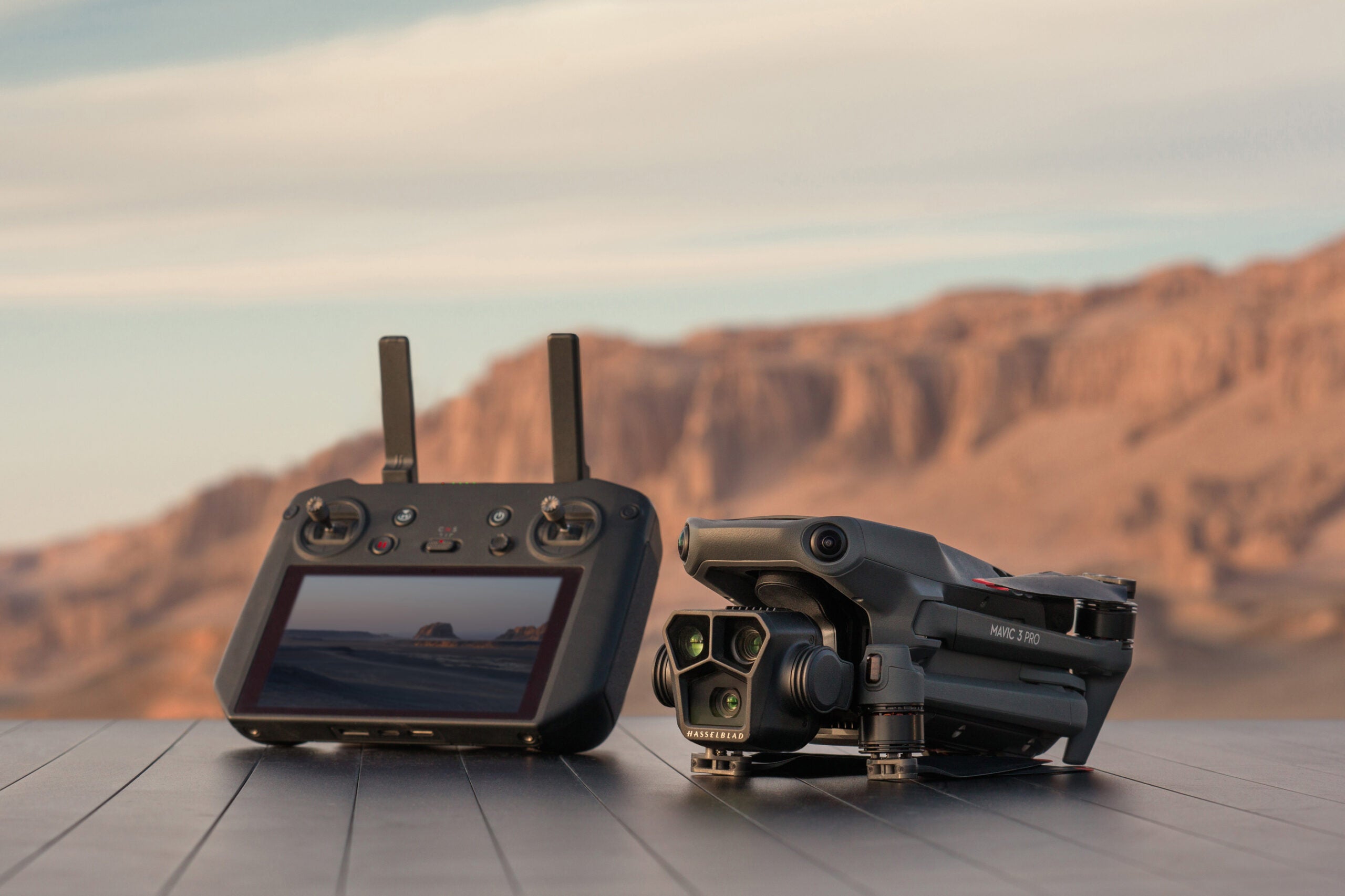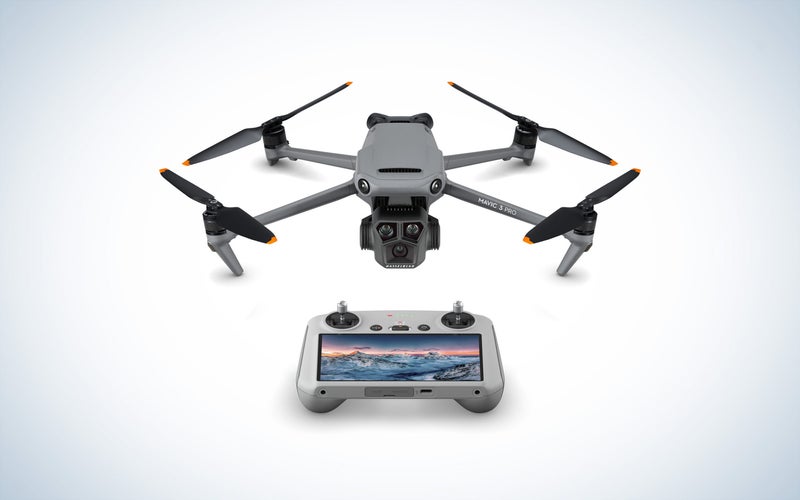
When it comes to consumer-grade drones, it doesn’t get much better than DJI’s Mavic line. Now, the company has upped the camera ante on its flagship Mavic offering with the triple-cam Mavic 3 Pro. It offers many of the same flight features as its other Mavic pals, but its triple camera array adds another level of flexibility when it comes to aerial content creation. Here’s what you need to know about the new DJI Mavic Pro 3 drone (currently up for pre-order).
DJI Mavic 3 Pro drone at a glance
- Three total cameras, each with different focal lengths
- Main camera: Hasselblad 4/3 20MP camera with a 24mm equivalent lens
- Medium tele camera: 70mm equivalent 48MP camera with an f/2.8 aperture
- Telephoto camera: 166mm equivalent 12MP camera with an F/3.4 aperture
- Up to 43 minutes of flight time
- Apple ProRes support in each camera (in Cine version)
- Video transmission up to 15 km
- 5.1K video up to 50 fps or 4K video up to 120 fps
- Upgraded Pro Cine model offers 1TB of built-in storage
- Object avoidance in every direction
- Price: $2,199
DJI’s new flagship Mavic
As the $2,199 price suggests, this represents the high-end of DJI’s consumer offerings. It relied on a very familiar folding form factor you’ll recognize from the standard Mavic 3, but the more advanced camera adds roughly two ounces of weight to the Mavic 3 Pro. The Pro 3 also promises three fewer minutes of flight time per charge than the standard Mavic 3 due to the extra weight. If you’re buying a drone at this level, however, you’re almost certainly going to want to buy extra batteries and bring them with you anyway.
DJI
Three cameras on a drone?
The big differentiator for the Mavic 3 Pro comes in the form of its camera array. It has a trio of imaging devices, all with their own unique specs and use cases.
The primary camera is a relatively familiar Hasselblad device with a Four Thirds sensor and a 24mm equivalent field of view. In addition to the main camera, the Pro 3 also offers two imaging devices with longer lenses. The medium telephoto camera offers a 48-megapixel resolution with a 70mm equivalent lens. It has a relatively fast f/2.8 aperture and a 1/1.3-inch sensor. The longest telephoto lens more than doubles the equivalent focal length to roughly 166mm. That extra length comes at a cost, however, because it offers a smaller 1/2-inch sensor and an f/3.4 aperture.
The cameras offer a variety of digital and optical zoom functions, depending on which one you select. But that flexibility opens the door to truly cinematic effects like dolly zooming, where the subject stays relatively static, but the background appears to close in or fall away depending on how you perform the maneuver.
Video specs
While we’re excited about the prospect of the high-quality 20-megapixel stills coming out of the main camera, the video capture features are the big draw here. All three cameras can shoot in Apple’s ProRes format. The main camera can shoot in 5.1K at up to 50 fps or 4K at up to 120 fps. It also now shoots in 10-bit D-Log M color mode to provide a very versatile and easily color-graded file that excels in tricky situations.
Even the other cameras with longer lenses can still pump out 4K footage at up to 60 fps, so you can get smooth, buttery footage no matter which imaging device you select.
Flight features
Beyond the imaging specs, the drone itself offers just about everything the already excellent Mavic 3 does. The Mavic 3 Pro gets 43 minutes of flight time on a single battery and employs an omnidirectional obstacle avoidance system that’s very handy for operators at every level. That comes heavily into play when you’re using one of the many automated flight modes that guide the drone along predetermined paths without the pilot having to perform the precision maneuvers.

DJI Mavic 3 Pro price & release date
The base model DJI Mavic 3 Pro comes in a package with the radio controller for a total cost of $2,199, but unless you’re planning to buy all of your accessories separately, that’s probably not the version you’ll want to purchase. The $2,999 Fly More Combo adds a pair of extra batteries, a battery charging hub, a set of neutral density filters (pretty essential for cameras with fixed apertures), a carrying case, and more.
For $3,889, you’ll get the Fly More Combo, but step up to the DJI RC Pro controller, which offers a more advanced screen and more precise controls. Finally, $4,799 steps all the way up to the Cine version of the Mavic 3 Pro, which includes a built-in 1TB SSD for storage and Apple’s Pro Res support.
We have had the new Mavic Pro 3 for a few days now, and we’ll have a full review in the coming weeks.
The post New Gear: The DJI Mavic 3 Pro drone carries a three-camera array appeared first on Popular Photography.
Articles may contain affiliate links which enable us to share in the revenue of any purchases made.
